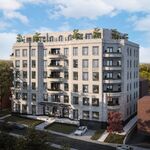You'd be surprised how many suicides happen in the TTC tunnels. The media does not report it out of respect. Usually it results in a few hours of service interruption. (as a side note, LRTs are a lot faster at stopping, making a successful suicide more challenging)
I agree with the first part. Too many times has my trip back home been interrupted by "a person at track level"

(with all the respect possible)
But as for the second, it's only because they move so slow! I believe subways hit about 70 or 80 km/h in tunnels, and there's no way a LRT would go that fast at the surface. There's no way they will be allowed to go over the speed limit (which is 60 for most arterials I think,) and they'll have to be even more cautious than cars and busses are.
If you've seen one of these true LRTs (long trains,) you can get a feeling of just how much inertia they have when moving. Even when going at 40 km/h, they take a relatively long time to stop. Maybe not as much as a subway, but then a Subway is going almost twice as fast with twice as many cars.
I have to admit though, I think someone would rather take their life in/on/with a subway rather than LRT. With LRT, it'll make a big mess and disturbance among a lot of people in a way that a subway wouldn't. Since I believe that most people are good, I assume that even in the face of death, people try to avoid the unnecessary suffering of others. There's probably also a lot more demand for suiciding in the subway than other transit modes

confused

I haven't heard of a lot of stories of people jumping infront of busses or streetcars, yet subways seem to be a widespread problem. Perhaps it's the relative painlessness, maybe there's a deeper meaning that busses and streetcars lack (I'm going too far into this, aren't I?)
But bottom line, don't think that LRTs have a better stopping power than subways. Whether it's for a person wishing to end their life, a little old lady with her walker, or a dog broken free from it's leash, LRTs will not be able to stop on a dime, and will definitely not be able to reach top speeds because of that.
There certainly is the possibility of car or pedestrian interference, but it's really not that significant, and safer driving needs to be enforced regardless of if an LRT is there or not.
Are you kidding me? Of course it can be significant! Any sort of vehicle crash along the route will hamper a LRT. An intersection crash (remember, we're talking Eglinton and Martin Grove, Kipling, Islington, Don Mills and Warden here,) would prove fatal to the system. A subway, believe it or not, operates completely independently from the road. Ergo, no on road problems can slow it down.
That said, I really don't mean to attack LRT as a mode. I've said several times, there's many places that I think LRT would work quite well (most notably Finch West, Islington, and all the Downtown streetcars.) But it is by no means a one size-fits all means of transportation as Miller is proposing. It can be relatively cheap compared to subway, and has obvious benefits over mixed traffic busses in speed, and over BRT in capacity and passenger comfort. But it certainly has it's limits.
Grade separation is good where it is cost effective, but there are many sections of this line where it would be so underutilized that it's not even worth it.
What sections in particular would be so underutilized it's not even worth it? Considering that grade separation on the Richview corridor might only be an extra $100 million/km (double the cost,) I don't see how about the same ridership as the B-D past Keele isn't worth it. If you don't believe me, take a look at just how the line's going to work. There's already a slew of apartment blocks from Martin Grove to Jane that hold tens of thousands of people. Add in a substantial amount of the commuter ridership from Martin Grove, Kipling, Islinton, Royal York, Scarlett and Jane, there could easily be fifty thousand people per day coming from the section west of Jane alone (not counting Pearson.)




